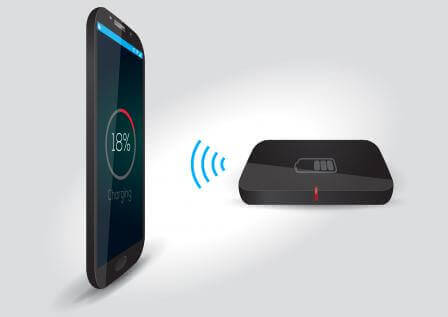What Is Wireless Charging?
Electrical oulets? Who needs ’em!
Today, new devices are being released, which charge wirelessly. This may sound magical, but the ability to transfer power wirelessly has been around since 1891. This functionality is slowly beginning to gain adoption in smaller devices hitting the market because of how easy it makes powering a device like your phone on the go.
Here, I’ll explain how wireless electricity works, the benefits behind it, and some of the reasons it’s been so slow to be adopted by the mainstream tech world.
How It Works
Current wireless technology works by inductive charging. The explanation involves complex physics, but I’m going to give you the 30-second version. When you have electricity running through a wire, it produces a magnetic field. With enough power, and wire all moving in the same direction, you’ll produce a strong magnetic field.
How does this help with wireless charging? Well, have you ever put something in between two strong magnets before? Depending on how thick the material is, the magnets will most likely hold one another up even though they are separated.
In a similar way, if you have a wire with a loop in it, that is just a few centimeters away from a similar loop of wire. Just imagine a pair of hoop earrings. Once electricity is run through the first loop, it will then cause the second loop to become energized. The key component in this has to do with something called resonance, and if two loops of wire both have the same resonance, then one can transfer power to the other.
Disadvantages of Wireless Power
Now you may be thinking, “This is amazing! But why isn’t this in every device already?” For now, the range in commercial products is limited to smaller devices that don’t require a ton of electricity, and it only works well when the charging station and the device it is charging are only a couple centimeters away. There’s plenty of research being done by companies and universities about scaling up more power and longer distances.
There are a handful of problems, however, that still need to be worked out before wireless power replaces batteries in all our devices, and the biggest problem is range. I mentioned that you can only charge current devices when they are directly resting on their charging plate/mat. In order to make it a more viable technology, it needs to have a range of at least a few meters (enough to cover a room).
This would allow you to power devices in that room, and not have to be centimeters from it.
Next would be fixing the efficiency problem. Right now if you were to charge a device wirelessly, you would only be able to transfer 60% of the power compared to that of a wire. Now, this number fluctuates significantly depending on who you’re talking to and if they are for or against wireless power, but at the end of the day, wireless power is less efficient for charging then is normal wired charging. This really comes into play when powering large devices.
A 60% efficiency won’t change a penny on your electricity bill if all you’re doing is charging you phone with it. However if you were charging your car, refrigerator and TV, that would be a different story.
Advantages of Wireless Power
Now let’s talk about all of the wonderful things wireless power can do. It may not be the silver bullet for every device or appliance that requires electricity, but for certain devices this could be a huge game changer in the world of electronics.
Android Devices
Android devices are where you primarily see wireless charging as a feature. Currently the most well-known of these devices is the Samsung Galaxy S6. What’s new about this phone is that it contains two different standards for wireless charging. There’s two different standards for wireless charging in the Android world: Qi and PMA. This phone is bridging the gap by being able to use both chargers. I’m sure the next couple of years will tell if it becomes the next VHS or Betamax (Kids, ask your parents).
There’s a lot of interesting theories that surround why Apple hasn’t yet released devices that can charge wirelessly. Some speculate that they are waiting for Qi or PMA to win and become standard, and some believe that they are developing their own within the company.
Internet of Things
The place that I see wireless power playing the biggest role though is in the coming internet of things revolution. I did a podcast on the internet of things, aka IoT, some time ago, so if you’re not familiar with the concept, go listen to that episode, What Is the “Internet of Things”?
Basically, IoT consists of many small devices that are all connected together. The main problem for them, though, is that they need all need a source of power. Let’s look at any number of devices, such as temperature sensors or a door open closed sensor. These are devices that would normally require a battery or wall power in order to operate.
If you have a device that has batteries, it has to be in a spot that’s easy to get to so that you can change them. Wireless charging can be useful here because these little devices often don’t use a lot of power, just a constant small amount. If you could bring them within range of a wireless power source, and they just started working, it would mean you could have lighter and cheaper devices.
Be sure to check out all my earlier episodes at quickanddirtytips tech-talker. And if you have further questions about this podcast or want to make a suggestion for a future episode, post them on Facebook QDTtechtalker.
Until next time, I’m the Tech Talker, keeping technology simple!
Image courtesy of Shutterstock.







